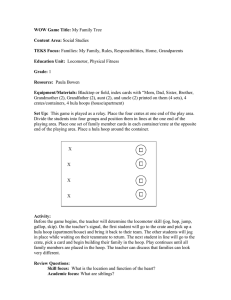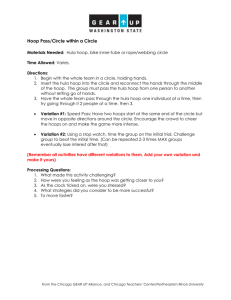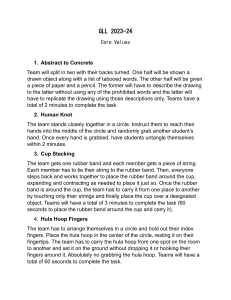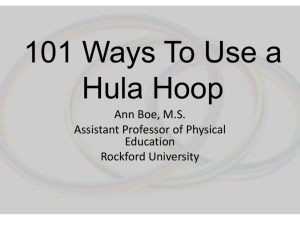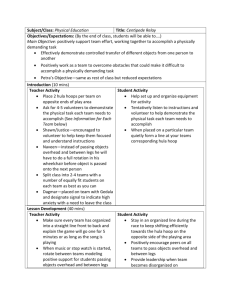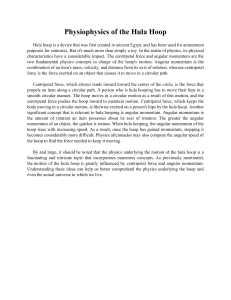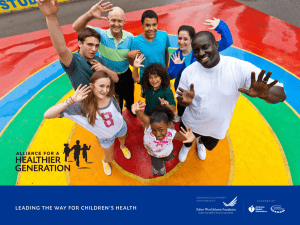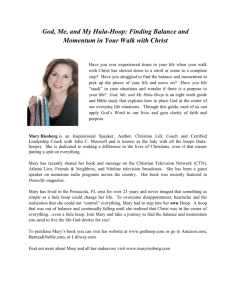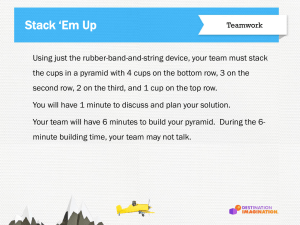Leadership in Action
advertisement
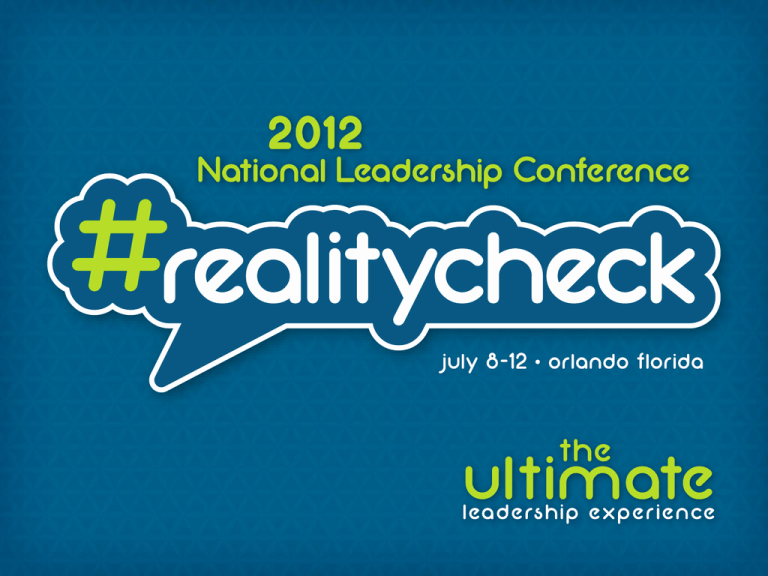
Leadership Triathlon Cathe Felz, National Consultant Team Connecting All Teens to Leadership • People who become leaders don’t always seek the challenges they face. Challenges also seek leaders. • James M. Kouzes and Barry Z. Posner, Student Leadership Practices Inventory Leadership is typically reserved for the “Best” and “Brightest.” Focusing only on these teens . . . Limit the potential of so many students. Students begin to believe only “good” students can be successful. Creative answers to community issues are lost. Benefits to schools • • • • • • • Better attendance. Higher retention rates. Fewer failed classes. Positive participation. Positive contributions to class discussions. Greater confidence in speaking at meetings. Take on peer leadership roles with confidence. • Confidence in resolving conflict. Benefits to Students • Increased empathy in community service projects. • Higher GPA than non leadership participants. • Increased involvement in school decision making process • Increased interest in post secondary or CTE training. – Source Building Everyday Leadership in All Teens, MacGregor, M.S. 2007 Facilitating Leadership Activities • Be personally enthusiastic. • Maintain control over the students and the activity. • Be the time keeper. • Be flexible. • Watch what is happening. • Assist in grouping students so everyone is included—colored stars, cards, role the dice. Where to begin • Be prepared—collect equipment ahead of time. • Focus the group on the topic of the activity so they know the purpose. • Be familiar with activity and how it works. Do a dry run before presenting activity to your group. • Read through instructions ahead of time. • Select 5 to 7 discussion questions ahead of time. Our Job is . . . • To teach teens that leading is as much promoting positive attitudes and respect as achievement. • Create a safe environment for practicing and testing leadership skills. • Promote positive interaction between students from a variety of backgrounds. Controlling the Situation • Establish a way to call the group back to order. • Make directions short and to the point. • If possible demonstrate what you want the group to do. If it Ain’t Workin’ Fix it • Be patient, it may take some time for the students to get used to a new approach. • If things aren’t working during the activity stop the activity or make adjustments to fix it for the students. • If activities don’t turn out the way you want. Keep trying! Perfect takes practice. • Make adjustments for the needs of your students. • Start small. One class, one activity, or a small group. Try it on your teacher friends. Leadership Hula • In teams of 5 to 7people form a circle facing each other. • Hold out two fingers at shoulder level of the tallest person on your team. • Lay a hula hoop across everyone’s fingers. • You assignment is to lower the hula hoop to the ground without loosing contact with the hoop. • If anyone on the team looses contact with the hula hoop at any point. The group must start over with the hula hoop at shoulder level. Discussion points • Was it easy to lower the stick to the ground? • What was the groups reaction to not being able to get the stick to lower quickly? • What did your group do to solve the problem? • At what point were you able to lower the stick? • What technique worked the best for your group? Class projects • Select and Plan a community service project as a group. – Culinary Arts prepare lunch for the senior center • Curriculum connections- food safety, preparation skills, serving. National Program-Community Service • Plan and implement a fundraiser as a group. – Babysitting service for a community event plan activities related to bike or pedestrian safety • Curriculum connections-planning age appropriate activities, ages and stages of development, safety. National Program- FACTS • Complete one national program as a class. National Program as a Class Project • Plan a variety of activities throughout the semester related to the national program • All students participate, all students take leadership roles, chapter members can participate after school or during class time • Students write press releases, newspaper articles, take pictures, prepare presentations, develop plans as part of the regular class assignments. National Programs • Use the questions from the national programs as the questions for writing assignments. • Students research topic such as number of teens killed in traffic accidents, number of area residents on active duty, or number of officers killed in the line of duty. • Students develop a list of possible partners, make contacts, and plan events. Assessment Participation in Activity 10 pts Writing assignment 15-25 points Researching a Leader project 100-150 points Homework Assignments 10-50 points Give discussion questions as a writing assignment– Writing Across the Curriculum Pre and post Student Leadership Practices Inventory (Kouzes and Posner) . The Unique Role of to leaders is to take us places we’ve never been before.
